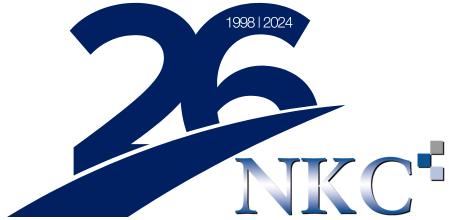Interest Rates and Their Implications for Economic Growth
In the world of economics and finance, interest rates are often viewed as the pulse that gauges the health of an economy. Their current structure and cost undoubtedly have a profound influence on economic growth. When we consider the landscape today, one can't help but ponder the long-term ramifications of persistent high interest rates, especially given the vast deficits that many nations carry on their ledgers.
Understanding the Current Economic Quandary
A prevalent apprehension among economists and financial analysts is whether prolonged high interest rates, set against the backdrop of these deficits, could tip economies into a recession. It's a significant concern, and not unfounded. Nations are knee-deep in fiscal spending, striving to buffer their economies against potential downturns. But this leads to a critical inquiry: Is this massive fiscal spending sustainable? If countries can't maintain this precarious balance, is an impending recession on the horizon?
The US and European Perspective: A Comparative Analysis
The US, a bellwether for global economic trends, presents an intriguing case study. Without substantial strides reducing the cost of services and shelter, the path for the Federal Reserve to reduce interest rates seems laden with hurdles. This sentiment is not confined to the US; Europe echoes similar concerns. Steven Blitz, Chief U.S. Economist at GlobalData TS Lombard, voiced a stark perspective, stating, "You need a recession to get inflation down." It's a bold statement that underscores the challenge of taming inflation.
Primary inflation culprits currently are services and shelter costs, whereas the broader Consumer Price Index (CPI) paints a picture of easing in various sectors, such as used-vehicle prices and medical care services, shelter (7.2%) and services (5.7%, excluding energy services) have seen sharper rises. These statistics beg the question: With such trends, how can the Fed realistically achieve its fiscal targets?
The Intricacies of the Housing Market and the Broader Economy
The housing market, often a reflection of broader economic sentiments, has been significantly influenced by these high interest rates. Both sales figures and financing costs have been affected. However, property prices remain high, which raises alarms about potential long-term effects, particularly concerning the construction of new apartments and maintaining an adequate housing supply.
Christopher Bruen, Senior Director of Research at the National Multifamily Housing Council, offers a perspective that extends beyond mere numbers. He suggests that the repercussions of rising rates could be far-reaching, potentially undermining broader job markets and economies, which are still grappling with the effects of previous rate increments.
Assessing the Fed’s Dilemma and The Path Forward
Despite the Federal Reserve enacting rate increases totalling 5.25 percentage points, there's an overarching air of caution. The central goal, after all, is to sufficiently cool the economy, aiming to steer inflation towards a 2% target. This task is not as straightforward as it might seem.
Marta Norton, Chief Investment Officer for the Americas at Morningstar Wealth, encapsulates this challenge. She notes that while the economy has managed to wash out many pandemic-induced impacts, several hurdles persist. Achieving the coveted 2% inflation target necessitates a cooling of the economic engines—a challenge made even more formidable by a robust consumer base and a generally healthy corporate sector.
The Global Investment Horizon: Risks and Realities
In the intricate dance of global finance, equity risk premiums have seen a decline. This shift has enhanced the appeal of cash as a risk-free investment avenue, with about a 5% return on capital. However, the unspeakable horror unfolding in the Middle East and the potential ramifications for the world economy, coupled with the potential risk of conflict spread and the breakdown of diplomatic ties, add layers of complexity. The situation is further intensified by President Biden's presence in the region and Jordan's recent decision to cancel a summit with him following a missile attack. Historical data suggests potential reversals in the wake of such events, but the looming uncertainty remains.
Adding to this is the simmering tension in Europe, with the Russia-Ukraine conflict at its epicentre. Such geopolitical events cast long shadows over the futures of interest rates, economic growth trajectories, and broader financial policies. This begs a pressing question: Are recent policy decisions inadvertently adding fuel to the inflation fire? And if so, how might this constrain corporate growth potential and broader economic prospects?
The global landscape is rife with uncertainties. Political disruptions, such as the challenge in electing a Speaker of the House in the USA, could lead to a government shutdown. This political turmoil seeps into market sentiments, potentially influencing interest rates, which in turn have implications for business planning for 2024 and beyond. SME owners and business leaders need to consider the potential global repercussions on their operations and recalibrate accordingly. A balanced and defensive approach is crucial, considering the possibility of stifled economic stability. Businesses should consider how these circumstances might impact their sustainability, cash flow, and profitability.
It's not just the news we receive locally that shapes our economic future. The world's events directly impact us. Now, more than ever, is the time to be vigilant, plan with foresight, and prepare for the myriad of scenarios the coming years might present.


